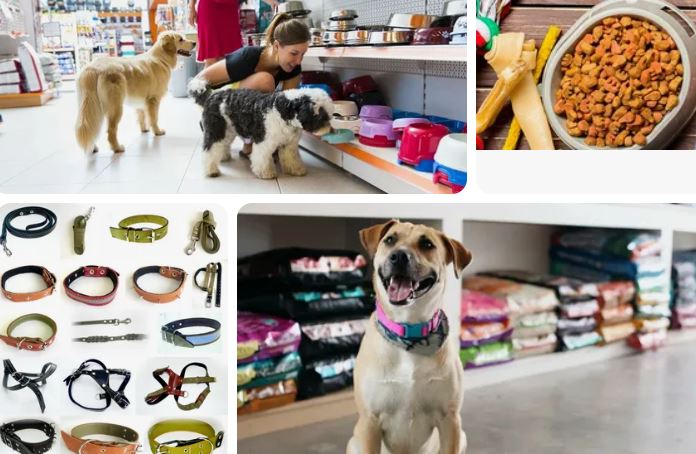Picture this: I’m standing in a local pet store, holding a ridiculously overpriced raincoat for my Dachshund, Max. The cashier smiles and says, “Have you seen our waterproof booties? They pair perfectly with this jacket.” Before I knew it, I walked out with a raincoat, booties, and a matching umbrella (yes, for the dog). That day, I realized the magic of cross-selling done right.
Cross-Sell with Other Pet Products & Companies isn’t just about pushing products—it’s about creating value. For pet businesses, collaborating with complementary brands can turn one-time buyers into loyal customers. But how do you do it without sounding salesy? Let’s dig into strategies that actually work (and a few I’ve messed up along the way).
Why Cross-Selling is the Cat’s Meow in the Pet Industry
The pet industry is a $260 billion jungle (thanks, APPA). But here’s the kicker: pet owners don’t just buy one thing. They’re obsessed with their fur babies. A dog owner buying organic food might also need grooming tools, toys, or anxiety supplements. The trick? Connect the dots for them.
Cross-Sell with Other Pet Products & Companies boosts average order value, but it’s also about solving problems. When you partner with brands that complement yours, you’re not just selling—you’re curating an experience. (Ever noticed how Chewy includes sample treats with every order? Genius.)
Finding the “Right Fetch”: How to Choose Partners
Not all collaborations are created equal. A few years back, I teamed my eco-friendly cat toy brand with a budget-focused pet bed company. Spoiler: It flopped. Our audiences cared about sustainability, not discounts. Lesson learned: Align values first.
Actionable Tips:
- Look for Complementary Niches: If you sell gourmet dog treats, partner with a high-end leash brand.
- Vet Their Audience: Do their customers overlap with yours? Instagram analytics are your friend here.
- Start Small: Test with a pop-up event or social media giveaway before committing to a full partnership.
(Pro Tip: Attend pet expos or join Facebook groups like “Pet Biz Collaborators” to scout potential partners.)
Bundle Up: Creating Product Pairs That Actually Make Sense
Let’s talk bundles. A common mistake? Throwing random products together. (“Buy this hamster wheel, get 50% off a fish tank!”) Instead, think like a pet owner.
Example of a Win:
A local groomer I know partnered with a natural shampoo brand to create a “Spa Day Bundle”: shampoo, conditioner, and a post-grooming calming spray. Sales jumped 30% because it solved a real need—stressed pets after bath time.
How to Price Bundles:
- Offer 10-15% off the total to incentivize purchases.
- Use urgency: “Limited-time bundle for National Pet Month.”
Loyalty Programs: The Secret Sauce for Repeat Sales
I’ll admit—I used to hate loyalty programs. Too many punch cards, too little payoff. Then I saw a pet store do it right. For every $100 spent, customers got a free “Mystery Toy” (for their pet) and a coupon for a partner brand’s organic treats.
Why It Worked:
- Surprise elements kept it exciting.
- Partner coupons introduced customers to new brands without hard-selling.
(P.S. Make sure partners reciprocate—feature their coupons in your program, and vice versa.)
Social Media Collabs: When Influencers Steal the Show
Remember #NationalDogDay? A pet apparel brand I follow teamed up with a dog influencer for a “Matching Outfit Challenge”. Followers posted photos of themselves and their pets in matching gear, tagging both brands. The result? 200+ UGC posts and a 40% sales bump for both companies.
Keys to Success:
- Choose influencers whose vibe matches yours.
- Co-create content (live Q&As, Instagram Stories) to engage both audiences.
Oops Moments: When Cross-Selling Goes Wrong
Let’s keep it real—not every idea works. Once, I tried cross-selling artisan catnip with a luxury litter brand. Turns out, cat owners don’t associate “premium litter” with “playtime”. The campaign tanked.
What I Learned:
- Test concepts with a focus group first.
- Don’t force partnerships—if the fit feels off, it probably is.
Tracking Success: Beyond the Sales Numbers
Sure, revenue matters, but track these too:
- Customer Feedback: Are they raving about the bundle?
- Repeat Purchase Rate: Did the collab bring them back?
- Social Shares: Did the campaign spark conversations?
Tools like Google Analytics and social listening platforms (Hootsuite, Brand24) can help.
Final Thoughts on How to Cross-Sell with Other Pet Products & Companies
Cross-selling isn’t about slapping products together. It’s about building relationships—with customers, partners, and even competitors. Start with one collaboration, track results, and scale what works.
And hey, if Max’s raincoat saga taught me anything, it’s that pet owners will happily splurge—if you make their lives easier. Now, who’s up for a “Pampered Pup” bundle?
Read Next:
Best Smart Home Devices For Pet Owners
Paws in the City Greenford: Pet-Friendly Activities and Services






